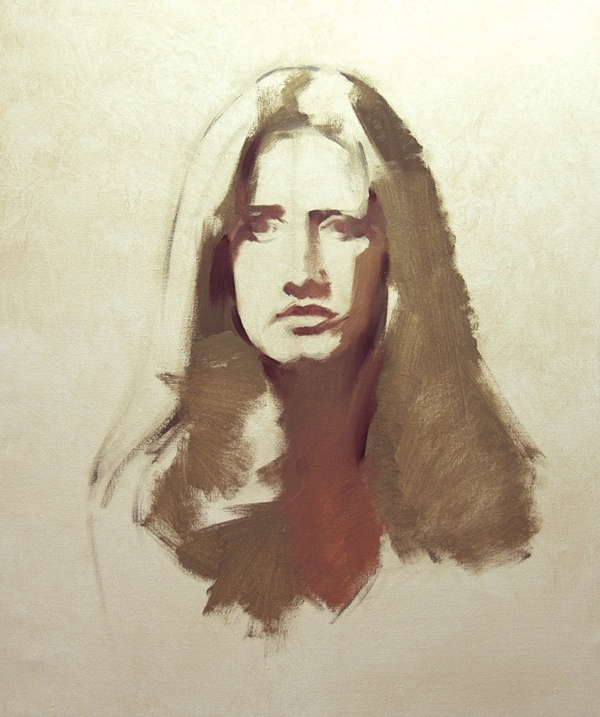|
Demonstrating
and Explaining
the Premier Coup Technique
Step 8: State Shadows |
|
State
Shadows
Now you will paint all areas in the painting where the main
light source does not strike — the shadow tones. Squint
your eyes to see the separation of the light and shade. Paint
these shadows exactly as you see them. Mix the color as carefully
as you can. Use a value chart if necessary to state the shadows
as dark as they really are. Squinting is the key to seeing the
shadows. The halftones, which you will paint next, are in the
light. The shadows are found on those planes where the main
light source does not reach. State all the shadows — on
the hair, on the face, on the garment. Properly stating the
shadows gives the painting a solid foundation. Make a simple
statement — work with a broad, poster-like simplicity.
|
 Hover to zoom final painting
Hover to zoom final painting |
In this single step, you will paint all the shadow
tones of the portrait. This immediately gives the painting a
solid foundation. The three-dimensionality that you hope to
achieve in the painting depends on getting these shadows correct.
The "Planes of the Head" model, when posed in the
same light as the live subject, helps to clarify the separation
of light and shade. Model by John Asaro. |
|
|